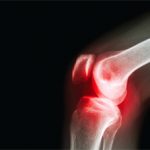She distinguished between sedentary people, who aren’t meeting the activity guidelines, and sedentary behavior—which includes television watching, computer use, reading, driving and other time spent in a sitting or reclining posture. “Less sedentary behavior, by contrast, is associated with better physical function, less future decline in function and lower risk of physical frailty,” she said.6
How can physicians integrate exercise promotion into common medical office interactions? Start with a brief assessment of physical activity on every visit, Dr. Brady said. She outlined a model of behavioral change, based on counseling for weight loss, using a “5A” sequence of supportive behaviors: assess, advise, agree, assist and arrange. She also recommended motivational interviewing, a patient-centered yet directed counseling approach designed to promote behavior change through development of a personal action plan.
Ask patients if they would like to make a plan to do something for their health in the next week and whether they would like to get a check-in from the doctor, she said. “Stop wrestling with your patients and start dancing with them.”
Doctors ought to go rollerblading with their patients—if not literally, then metaphorically, partnering with the patient and leading by example, added Alex M. McDonald, MD, CAQSM, a former professional triathlete and current sports medicine doctor for the Kaiser Permanente HMO in Southern California. In the same session on exercise, Dr. McDonald said his athletic experience has given him a valuable perspective on the importance of exercise. He cited the Exercise Is Medicine (EIM) global health initiative of the American College of Sports Medicine, which encourages primary care physicians to include physical activity in their treatment plans and refer patients to EIM-credentialed exercise professionals.
“Patients come to us afraid to exercise. One patient recently told me he was afraid to move. I gave him permission,” Dr. McDonald said. Physicians during the office visit can ask about the patient’s level of physical activity—its frequency and length of time—make an individualized prescription for more physical activity, and refer to a fitness professional or other resource in the community.
Physicians are challenged to acknowledge the pain their patients experience, with the goal of getting them to move, he said. There may be initial exacerbation of the pain, and yoga or stretching may work better for some patients with RA.
Larry Beresford is a freelance medical journalist in Oakland, Calif.
Exercise Rules of Thumb
Dr. McDonald says:
- Start low and go slow;
- Establish a routine;
- Find the right time and place for exercise; and
- Make it enjoyable.
References
- Office of Disease Prevention and Health Promotion. 2008 Physical Activity Guidelines for Americans; 2008.
- Murphy LB, Hootman JM, Boring MA, et al. Leisure time physical activity among U.S. adults with arthritis, 2008–2015. Am J Prev Med. 2017 Sep;53(3):345–354.
- Wilcox S, Der Ananian C, Abbott J, et al. Perceived exercise barriers, enablers, and benefits among exercising and nonexercising adults with arthritis: Results from a qualitative study. Arthritis Rheum. 2006 Aug 15;55(4):616–627.
- Dunlop DD, Song J, Lee J, et al. Physical activity minimum threshold predicting improved function in adults with lower-extremity symptoms. Arthritis Care Res (Hoboken). 2017 Apr;69(4):475–483.
- Young DR, Hivert MF, Alhassan S, et al. Sedentary behavior and cardiovascular morbidity and mortality: A science advisory from the American Heart Association. Circulation. 2016 Sep 27;134(13):e262–e279.
- Song J, Lindquist LA, Change RW, et al. Sedentary behavior as a risk factor for physical frailty independent of moderate activity: Results from the Osteoarthritis Initiative. Am J Public Health. 2015 Jul;105(7):1439–1445.

